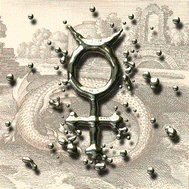Accurate calibration of mercury vapour measurements
Abstract
Almost all measurements of mercury vapour, for example those to determine mass concentration in air, are currently ultimately traceable to the vapour pressure of mercury, usually via a bell-jar calibration apparatus. This allows a saturated concentration of mercury vapour in air to develop in a confined space in equilibrium with ambient conditions, from which a known mass of mercury can be removed for calibration purposes. Setting aside the uncertainty in the vapour pressure of mercury at a given temperature, the accuracy of vapour phase mercury determinations depends critically on fully understanding the operation and sensitivities of the mercury bell-jar apparatus. This paper discusses the thermodynamic and kinetic considerations that must be taken into account when using the bell-jar apparatus, provides the theoretical basis for understanding the operation of the bell-jar, and presents


 Please wait while we load your content...
Please wait while we load your content...